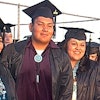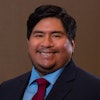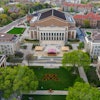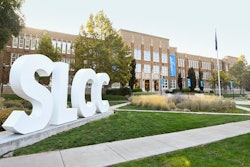Growing up, Paulita Aguilar developed a love for books and a reliance on librarians that she now grooms among American Indian and other college students who lacked the resources she had available.
Aguilar is curator of the University of New Mexico’s Indigenous Nations Library Program (INLP), mandated to increase information literacy and research skills among tribal students, who make up 6 percent of the flagship campus in Albuquerque.
Before college, many of them only knew modest, single-room libraries that sometimes did not employ a staff librarian. Consequently, UNM’s four libraries, which are cavernous enough to house more than 1 million volumes, can seem overwhelming, especially to freshmen.
Aguilar’s one-on-one tutorials vary from showing students how to find their books of choice among the vast stacks and long aisles to teaching them how to access journals and scholarly articles from electronic databases.
“Faculty assume that students know how to use a library before they come to college, but that’s not always the case,” says Aguilar, who grew up in Santo Domingo Pueblo, a few miles outside Albuquerque. “And those students usually feel too intimidated to ask faculty for help. Some don’t even know the difference between Google and a database.”
She interacts with all students taking Native American studies courses, such as history and indigenous languages, at least once to give lessons specifically in how to use UNM libraries. During summer orientation for freshmen, Aguilar gives library tours.
Beyond academia, the INLP acts as a library for many of the state’s tribal nations, Aguilar says. For instance, UNM will borrow research materials from other sources at the request of tribal governors, who often don’t know where to look themselves.
Established in 2004, the INLP was financed by state funds under a legislative measure to provide Native American library outreach. The state no longer provides monies, but UNM officials have committed to continuing the program.
Dr. Lotsee Patterson, professor emerita of library and information studies at the University of Oklahoma, says “a longstanding, historical absence of funds” for libraries in tribal communities is why so many indigenous people are largely unfamiliar with them. When Patterson began teaching 50 years ago at a rural public school of mostly American Indians, she was dismayed and appalled that it had no library. She went on to help secure permanent federal funding for tribal libraries.
As a sign of how slow progress can be, however, Aguilar still encounters students whose high schools did not even designate a specific room as a library or whose tribal community library was limited to children’s and young adult literature.
Aguilar doesn’t recall a librarian working at the tiny library in her elementary school. Santo Domingo Pueblo did not have a community library either until she was an undergraduate at UNM in the 1980s. But because her mother had no day care for her children while attending UNM, the young Aguilar accompanied her mother to college libraries. Her mother would research while the girl got help from staff librarians in how to use a card catalog. An avid reader, Aguilar spent hours poring over science fiction and fantasy books.
Patterson, who has mentored dozens of librarians among native people, recruited Aguilar to OU for her master’s in library and information studies. Aguilar joined UNM as a librarian in 2002.





















